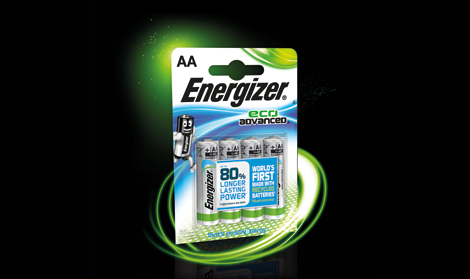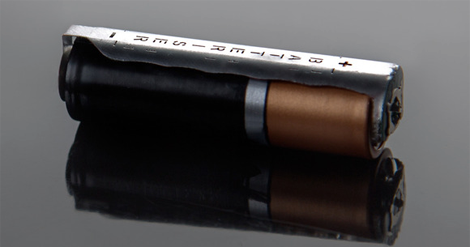
Energizer’s Eco Advanced single-use batteries are the first to contain recycled materials – its first step toward adding more sustainability to a world increasingly turning to unconnected power
As the design world tackles the growing challenge of adding Internet of Things connectivity to, well, pretty much anything going, a thought has to be spared for how we’re going to power all these sensors, screens and transmitters.
Following a rise in inbuilt power sources connectable for recharging, single-use batteries are now back in vogue for low power functions, which from a sustainability point of view might worry some consumers.
Seeking to increase its sustainable output, battery manufacturer Energizer has announced its latest Eco Advanced technology, which uses four per cent recycled battery matter (by weight) in its AA and AAA batteries.

With products loaded with realtime sensors – such as Santa Cruz’s mountain bike – unconnected power demands are growing, and rechargeable methods aren’t always best
Energizer’s research team started the project during its spare time back in 2007, testing methods to remove useful materials from the waste matter of recycled batteries to put it back into new batteries.
The team developed a proprietary recycling process – part mechanical, part chemical – that can take any alkaline batteries (including its competitors products) and subtract useable materials of the same quality as virgin materials out of the ground.
For the time being this technology is going into the AA and AAA size batteries, which make up 80 per cent of battery sales, yet is being developed to move into other sizes and types, including coin cell batteries that are increasingly used to power sensors, small displays and communication receivers and transmitters.
With the UK already using 500m single-use batteries each year, the prospect of more unconnected power sources could mean an increase in the number of single-use batteries – making the recycling and reuse of materials all the more important.
The initial reaction is to turn to rechargeable batteries, but as Energizer (which produces both single use and rechargeable products) pointed out, when compared the extra peripherals needed (charger units, leads, plug) and process of sourcing and extracting nickel means that ecologically and economically there are trade offs on both sides.
Energiser is aiming to reach 40 per cent recycled content in its batteries over the next 10 years (by which point we’ll be up to our – potentially digital – armpits in the IoT), but it’s quick to realise that customers won’t trade performance for tree-hugging – hence its latest creations are top of the range for performance and lifetime too, with the AA lasting a claimed 80 per cent longer in a digital camera than standard alkaline batteries.
As designers look to design a better world through connected devices, and more parts of the world buy into consumer goods culture, how we power this world is going to become more important and the greener the choices the better.
The design the extends disposable battery lifetime ‘by 800%’

Batteriser’s housing allows the circuitry to fit snugly to its form, letting it fit standard housings. Read more here.






